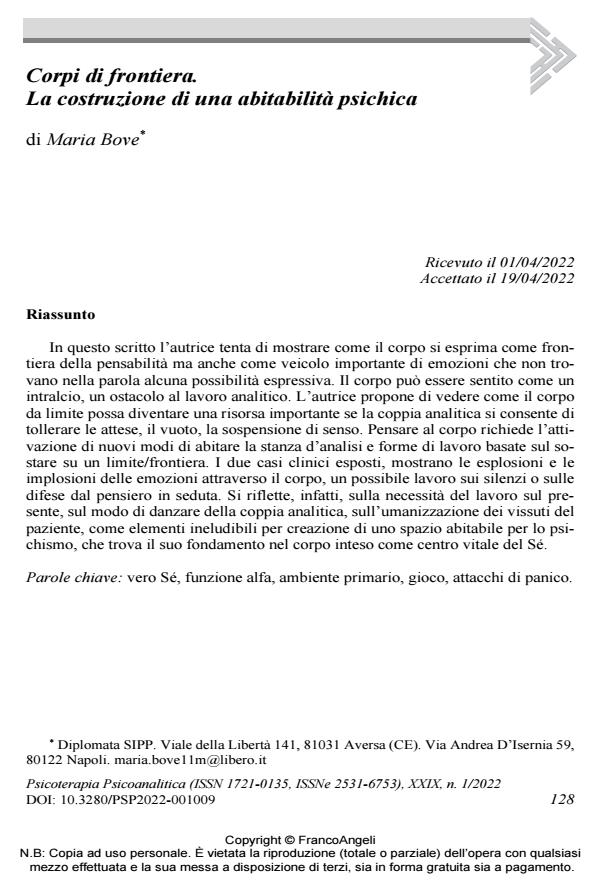Border bodies. The construction of a psychic habitability
Journal title PSICOTERAPIA PSICOANALITICA
Author/s Maria Bove
Publishing Year 2022 Issue 2022/1
Language Italian Pages 8 P. 128-135 File size 145 KB
DOI 10.3280/PSP2022-001009
DOI is like a bar code for intellectual property: to have more infomation
click here
Below, you can see the article first page
If you want to buy this article in PDF format, you can do it, following the instructions to buy download credits

FrancoAngeli is member of Publishers International Linking Association, Inc (PILA), a not-for-profit association which run the CrossRef service enabling links to and from online scholarly content.
In this paper, the author tries to show how the body expresses itself as a frontier of thinkability but also as an important vehicle for emotions that find no expressive possibility in the word. The body can be felt as a hindrance, an obstacle to analytic work. The author proposes to see how the limiting body can become an important resource if the analytic couple allows themselves to tolerate expectations, emptiness, suspension of meaning. Thinking about the body requires the activation of new ways of experiencing the consulting room and of forms of work based on standing on a limit / border. The two clinical cases exposed show the explosions and implosions of emotions through the body, a possible work on silences or on the defenses from thought during the session. The paper argues on the need to work on the present, on the way of dancing of the analytic couple, on the humanization of the patient’s experiences, as unavoidable elements for the creation of a habitable space for the psychism, which finds its foundation in the body understood as vital center of the Self.
Keywords: true self, alpha function, holding environment, play, panick attack.
Maria Bove, Corpi di frontiera. La costruzione di una abitabilità psichica in "PSICOTERAPIA PSICOANALITICA" 1/2022, pp 128-135, DOI: 10.3280/PSP2022-001009